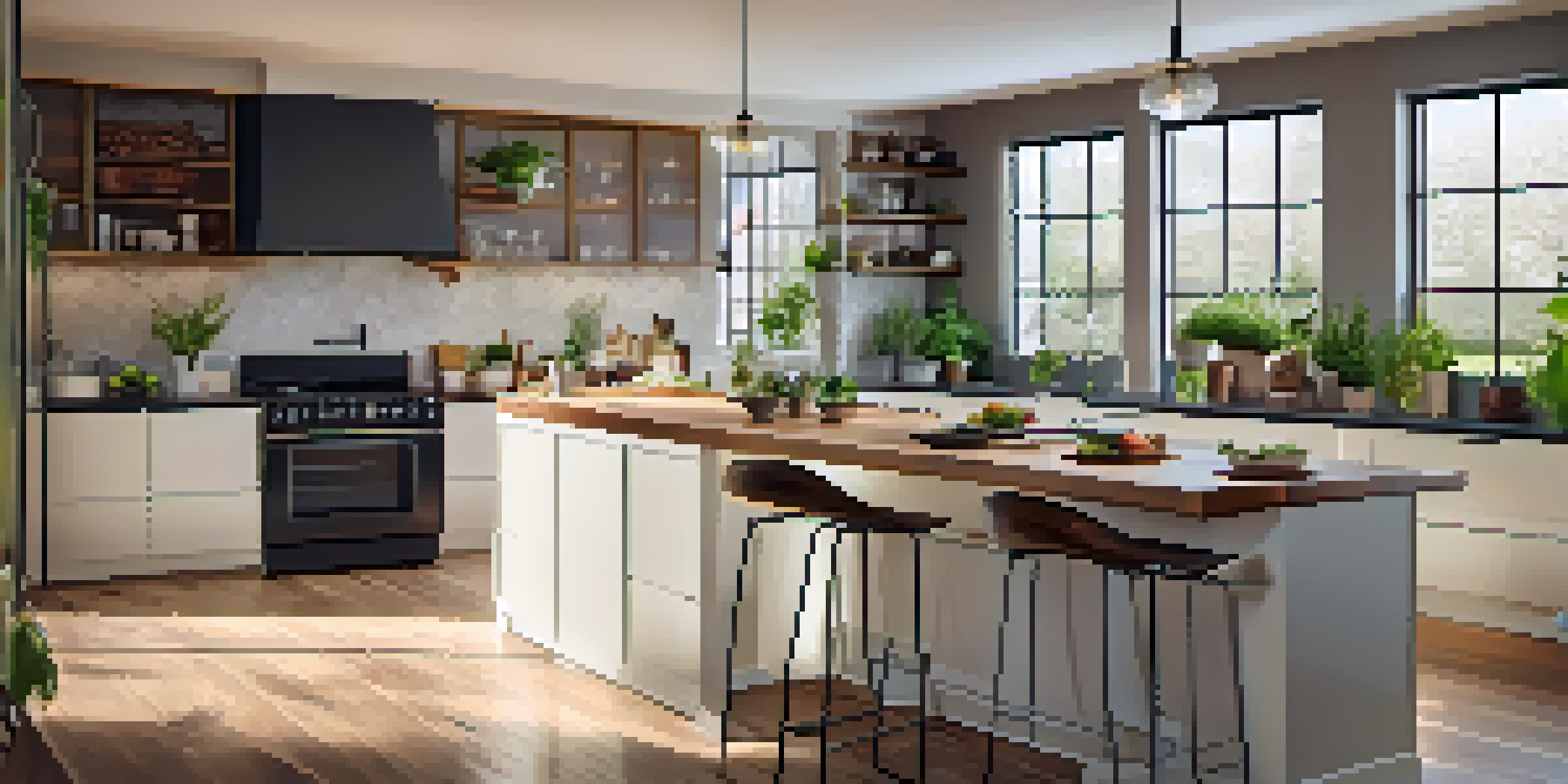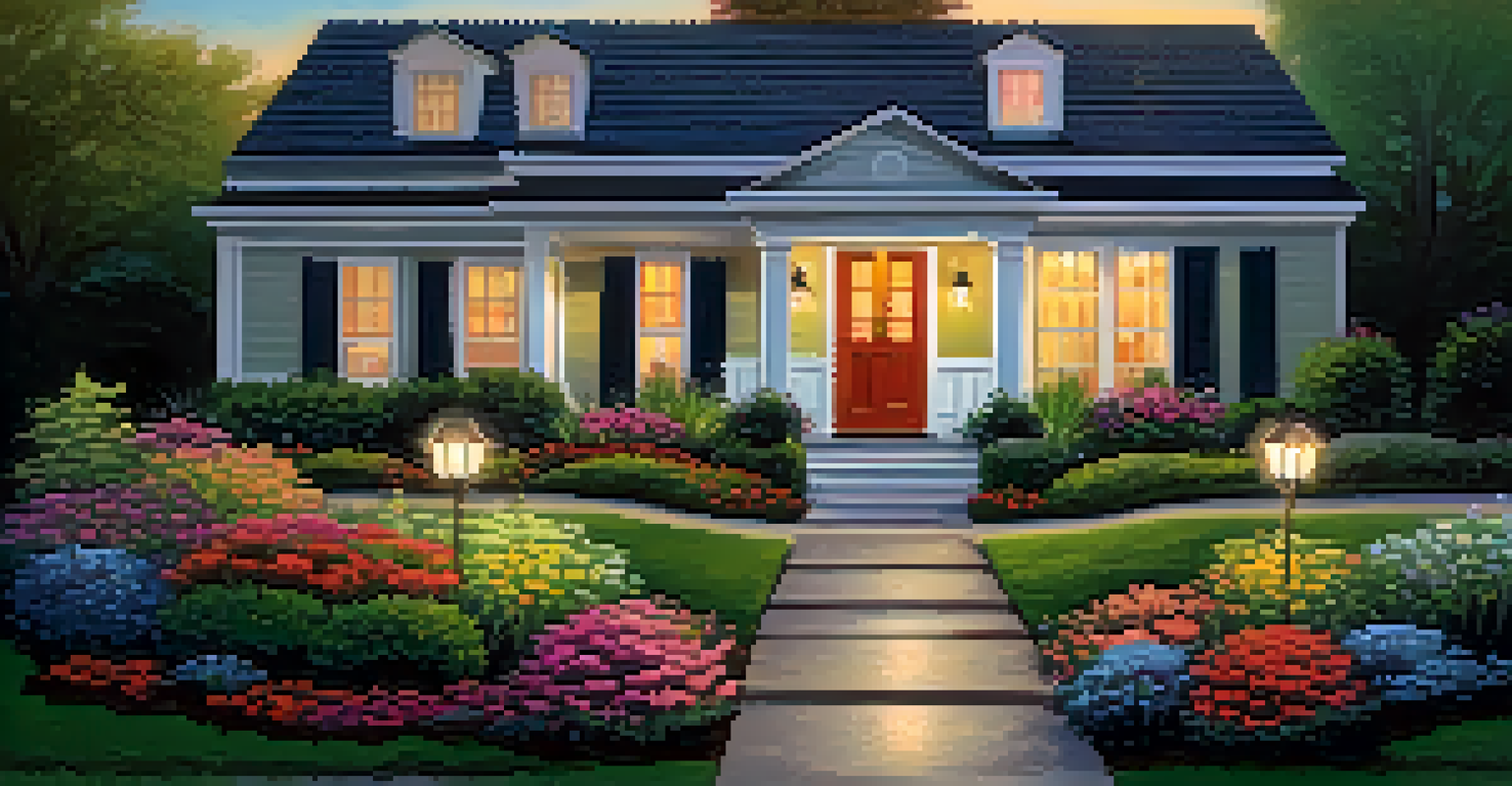How to Prioritize Home Upgrades for Maximum Value

Understanding the Importance of Home Upgrades
Home upgrades can significantly impact your property's value, making it crucial to understand what to prioritize. These improvements not only enhance your living experience but can also yield a return on investment when you decide to sell. So why is this important? Because a well-planned upgrade can set your home apart in a competitive market.
Home is not just a place, it’s a feeling.
Consider this: a fresh coat of paint can revitalize a tired room, while kitchen renovations are often at the top of buyers' wish lists. By focusing on the right upgrades, you can attract potential buyers and increase your home's desirability. This understanding is the foundation for making informed decisions about your renovation projects.
Ultimately, knowing the importance of home upgrades helps you allocate your budget wisely, ensuring that every dollar spent contributes to enhancing your property’s value.
Assessing Your Home's Current Condition
Before diving into upgrades, take stock of your home’s current condition. Walk through each room and look for areas that need attention—this could be anything from outdated fixtures to worn-out flooring. Creating a list helps you visualize the spaces that require the most immediate upgrades.

It's also helpful to consider the age of your home and any major systems like plumbing, electrical, or HVAC that may need updating. Identifying these critical areas early can prevent costly repairs down the line and ensure your upgrades are well-timed. Think of this assessment as a health check for your home.
Home Upgrades Boost Property Value
Strategic home upgrades enhance both living experience and market appeal, ensuring a higher return on investment.
By understanding where your home stands, you can prioritize upgrades that not only enhance aesthetics but also maintain functionality.
Evaluating Potential ROI for Each Upgrade
When considering upgrades, it's essential to evaluate the potential return on investment (ROI) for each project. Some renovations, like kitchen or bathroom remodels, often yield higher returns compared to others such as luxury landscaping. Knowing these figures can guide your decisions and help you focus on projects that provide the best financial payoff.
The best investment on Earth is earth.
For instance, a minor kitchen remodel may recoup about 80% of its cost, while a new garage door can offer an impressive 95% return. Analyzing these statistics enables you to allocate your funds effectively, ensuring you invest in projects that will resonate with future buyers. Use tools like online calculators or consult with real estate professionals to get a clearer picture.
Ultimately, prioritizing upgrades with a higher ROI means your home will be more appealing to buyers and potentially sell faster.
Setting a Realistic Budget for Upgrades
Once you’ve identified which upgrades to prioritize, it’s time to set a realistic budget. Consider what you can comfortably afford without straining your finances. Remember, some upgrades may require professional help, so factor in labor costs along with materials when calculating your budget.
It's also wise to include a contingency fund—typically about 10-15% of your budget—to cover unexpected expenses that may arise during renovations. This way, you won’t be caught off guard by costs that could derail your plans. Think of it as a safety net that allows you to proceed with confidence.
Assess Current Condition First
Evaluating your home's existing state helps prioritize upgrades that improve aesthetics and functionality.
By establishing a clear budget, you can make informed decisions that align with your financial situation while still achieving impactful upgrades.
Researching Trends in Home Design and Market
Staying informed about current trends in home design and the real estate market is crucial for making upgrade decisions. Popular styles and features can change, so keeping an eye on what buyers are looking for can give you a competitive edge. Consider trends such as open floor plans, energy-efficient appliances, or smart home technology.
Engaging with local real estate agents or browsing home improvement websites can provide insights into what’s hot in your area. For example, if you discover that homes with outdoor living spaces are selling faster, it might be worth considering an upgrade in that direction. This research not only informs your decisions but also helps ensure your home stays relevant.
Ultimately, aligning your upgrades with market trends can enhance your home’s appeal and position it favorably among potential buyers.
Choosing Upgrades That Enhance Curb Appeal
First impressions matter, especially when it comes to your home. Enhancing curb appeal can significantly impact a buyer's perception before they even step inside. Simple updates like fresh landscaping, a new front door, or exterior paint can make a world of difference at a relatively low cost.
Think of your home as a book cover; it needs to catch the eye and invite potential buyers in. An inviting exterior not only makes your home more attractive but can also set the tone for what’s inside. Investing in these upgrades can create a welcoming atmosphere that resonates with viewers.
Budget Wisely for Renovations
Setting a realistic budget, including a contingency fund, ensures you can manage upgrade costs effectively.
By prioritizing curb appeal, you set the stage for a successful showing and increase your chances of a quick sale.
Planning for Future Needs and Resale Value
As you consider upgrades, it's essential to think about both your current needs and future resale value. While you may want a luxurious master suite now, consider how it will appeal to future buyers. Balancing personal preferences with marketability is key to making smart renovation choices.
For instance, if your family is growing, adding an extra bedroom or bathroom may be beneficial for both your lifestyle and potential resale. This foresight ensures that your upgrades serve you well now while also appealing to a broader audience later. Think of it as building a bridge between your current living situation and future possibilities.

By planning with both your needs and resale value in mind, you create a win-win scenario that enhances your home’s worth and your enjoyment.